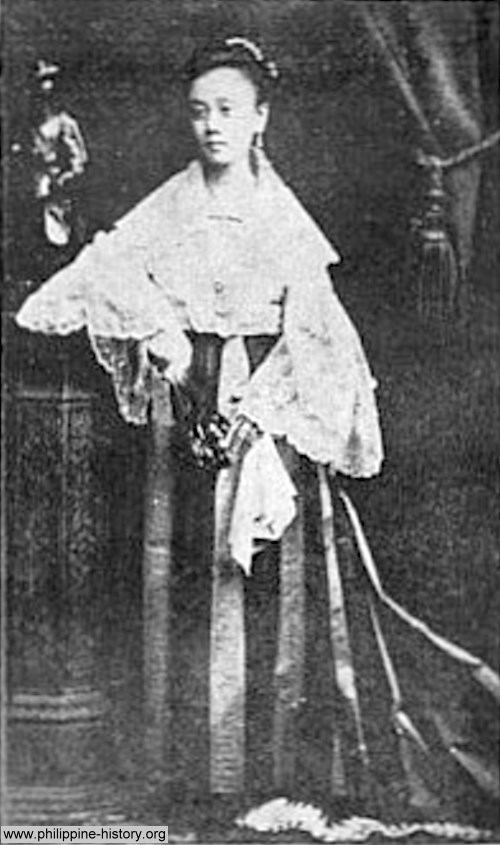Gender Female Religion Roman Catholic | Occupation Monastic Created by José Rizal | |
 | ||
Family Father Dámaso (father)
Doña Pia Alba (mother) Significant other(s) Juan Crisóstomo Ibarra y Magsalin (fiancé) Relatives Capt. Santiago de los Santos (stepfather)
Isabel (step-aunt) Played by Monique Wilson, Edita Vital Movies Touch Me Not, José Rizal, El Filibusterismo Similar Padre Dámaso, Crisostomo Ibarra, Padre Salvi, Doña Victorina, Paulita Gomez | ||
María Clara, whose full name is María Clara de los Santos, is the mestiza heroine in Noli Me Tángere, a novel by José Rizal, the national hero of the Republic of the Philippines. Her name and character has since become a byword in Filipino culture for the traditional, feminine ideal.
Contents
María Clara is the childhood sweetheart and fiancée of Noli Me Tángere's hero, Juan Crisóstomo Ibarra y Magsalin, the son of Don Rafael Ibarra. Although raised as the daughter of Captain Santiago "Kapitán Tiyago" de los Santos and his wife Doña Pía Alba, who are both native Filipinos. María Clara is in fact the illegitimate offspring of Padre Dámaso, a Spanish friar, and Doña Pia, whom he coerced into sexual relations.
Dámaso is made the girl's godfather; Doña Pia had died giving birth to Mariá Clara. Kapitán Tiyago's cousin, Tía Isabél, then came to be the dominant maternal figure in her life. As her beau Crisóstomo Ibarra was studying in Europe, Kapitan Tiyago sent María Clara to the Beaterio de Santa Clara, a convent school where she cultivated femininity under religion. Later in the novel, María Clara discovers the truth that Dámaso is her biological father.
Description
In the novel, María Clara is regarded as the most beautiful and widely celebrated lady in the town of San Diego. A devout Roman Catholic, she became the epitome of virtue, "demure and self-effacing" and endowed with beauty, grace and charm, and promoted by Rizal as the "ideal image" of a Filipino woman who deserves to be placed on the "pedestal of male honour". In Chapter 5 of Noli me tangere, María Clara and her traits were further described by Rizal as an "Oriental decoration" with "downcast" eyes and a "pure soul".
Basis and adaptation
Rizal based the fictional character of María Clara from his real-life girlfriend and cousin, Leonor Rivera. Although praised and idolised, María Clara's chaste, "masochistic" and "easily fainting" character had also been denounced as the "greatest misfortune that has befallen the Filipina in the last one hundred years". In Filipino fashion, María Clara's name has become the eponym for a multi-piece ensemble known as the María Clara gown, emulating the character's traits of being delicate, feminine, self-assured and with a sense of identity.
